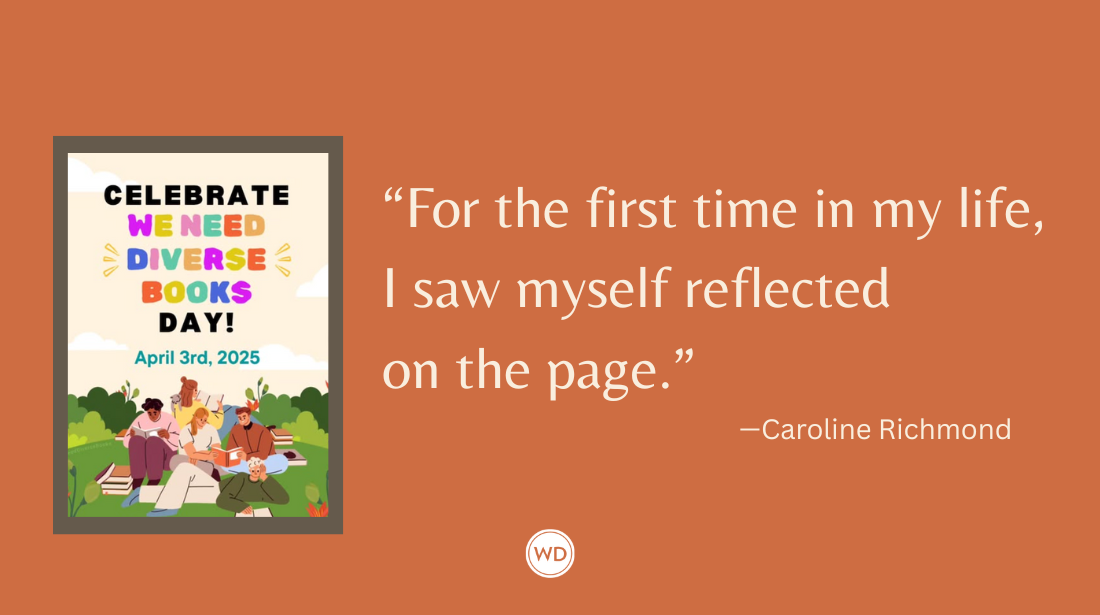Ellen Potter: On a Folktale Inspiring New Middle-Grade Fiction
Award-winning author Ellen Potter discusses combining her love of New York City’s history with a classic Icelandic folktale in her new middle-grade novel, Hither & Nigh.
Ellen Potter is the author of more than 20 award-winning novels for children and young adults, including Hither & Nigh, Olivia Kidney, Slob, the Big Foot and Little Foot series, the Piper Green and The Fairy Tree series, The Humming Room, Pish Posh, and The Kneebone Boy. Several of her books have been chosen by New York Public Library in their Best 100 Books for Children list and have appeared on numerous State Reading Lists.
Her nonfiction writing book, Spilling Ink, A Young Writer’s Handbook, coauthored with Anne Mazer, was also chosen by New York Public Library’s as a Best 100 Books for Children. She has also written #Writers 911; How to Tackle Writer’s Block & Unleash Your Creativity. Ellen lives in upstate New York with her family. For more information about Ellen and her books, visit EllenPotter.com.
In this post, Ellen discusses combining her love of New York City’s history with a classic Icelandic folktale in her new middle-grade novel, Hither & Nigh, her hope for readers, and more!
Name: Ellen Potter
Book title: Hither & Nigh
Publisher: Margaret K. McElderry Books
Release date: October 18, 2022
Genre/category: Middle-Grade Fiction
Previous titles: Olivia Kidney, Slob, the Big Foot and Little Foot series, The Humming Room, Pish Posh, and more
Elevator pitch for the book: Three young magicians discover a secret, parallel New York City as they search for a missing boy. A dazzling middle-grade fantasy adventure.
IndieBound | Bookshop | Amazon
[WD uses affiliate links.]
What prompted you to write this book?
The idea for Hither & Nigh took root after I discovered the Icelandic origin story of the elves, or the Hidden People. Like a lot of folkloric origin tales, it’s full of bad behavior and excessive punishment.
According to the folktale, the Creator came down to visit Eve while she was in the middle of bathing her children. Only half the children were clean, so Eve hid the dirty kids in the bushes—something along the lines of shoving the nasty cat litter box in the broom closet when the doorbell rings unexpectedly. The Creator was not happy about the attempt at bamboozlement and condemned the dirty kids to be invisible to everyone for eternity, which seems unfair to the kids whose self-esteem surely had already taken a hit from that shove into the bushes.
In any case, I started toying with the notion that maybe the elves are not the shunned Hidden People after all; maybe we’re the Hidden People. Maybe we’re descendants of those dirty kids who were punished. This idea, combined with my obsession with New York City’s history, planted the seeds for Hither & Nigh.
How long did it take to go from idea to publication? And did the idea change during the process?
Most of my books take me about a year to write, but Hither & Nigh took a solid two years and then some. This was partly due to the complexity of creating the Nigh, a distorted version of New York City where monsters roam Central Park and Magicians reign. The system of magic also took time to nail down so that it was consistent, logical and fun to imagine.
Since I’m not a fan of plotting, I often have several false starts before I settle into my story. It’s sort of like walking into a big party. It usually takes a few laps around the room, and several unsuccessful attempts at conversation, to find the people you really connect with.
Were there any surprises or learning moments in the publishing process for this title?
Throughout my career, I’ve been blessed with many great editors, which means I’m always learning something new during the editorial/publishing process. The brilliant Karen Wojtyla edited Hither & Nigh, and her notes were a master class in rigorous fantasy world-building. She caught every inconsistency or lapse in magical logic: “Wait, wouldn’t you need a pair of X-Ray glasses for this spell to work?” It always tickles me that two adults can earnestly discuss things like which nostril a tiny magical creature should be shoved into or if a protection spell would actually work on an Imp.
In the category of “delightful surprises,” just have a look at Jen Bricking’s gorgeous cover art for Hither & Nigh. I’ll be honest, it’s always a nail-biter when you receive that email with the cover art attached. I usually squeeze my eyes shut and pray right before I click on the attachment. Jen’s cover art literally took my breath away. She captured all the details—the horse-sized dogs, the angel Bethesda, and the whole magic-infused atmosphere of the Nigh.
Were there any surprises in the writing process for this book?
When I write, I often feel like I’m coaching a baseball team. There will be a few heavy hitters on my roster. These are my main characters, the ones who will make an appearance in nearly every inning. There will also be some players sitting on the bench—my minor characters—whom I’ll send into the game every now and then.
Sometimes, though, one of my bench warmers will surprise me. When I send them in to play, they’ll completely crush it. They’ll make the heavy hitters hit better. They’ll make everything around them buzz with excitement.
In Hither & Nigh, that “benched” minor character was Ruth Rocco, an eccentric kid who sits at the same lunch table as Nell, the book’s protagonist. Initially, I didn’t have any big plans for Ruth, but I quickly realized that this kid would not be ignored. A trans girl who speaks like a 1930s Hollywood agent and will fall on the sword to protect her friends, Ruth is almost always everyone’s favorite character: “She should have her own book, Ellen!” “Will she be in the sequel?” (She will.)
What do you hope readers will get out of your book?
I like to imagine my reader sitting in the back seat of a car, so absorbed in Hither & Nigh that when they arrive at their destination, they look up dazed and astounded that any time has passed.
If you could share one piece of advice with other writers, what would it be?
Okay, I’m going to tell you a true story. You may wonder what it has to do with writing advice, but stick with me.
I used to live in a tiny village on the coast of Maine. There was a young woman named Evelyn who worked in our local convenience store. One night, after her shift, she was walking by the town dock when she saw a young seal playing in the water. She dubbed him Sammy, and every evening she would sit on the dock after her shift was over and call out his name.
Sometimes Sammy would pop his head out of the water, but plenty of times he wouldn’t. It didn’t matter. Evelyn would sit on the dock faithfully every evening, call out his name, and wait. There were times she wouldn’t see him for weeks and would worry that something had happened to him, but then Sammy would suddenly show up out of the blue.
After a while he began to show up more reliably until finally Evelyn could go out to the dock every evening, call out “Sammy!” and he’d appear, as though he were expecting her. If the tide was high, she’d dangle her legs in the water, and Sammy would nuzzle her legs and let her pet him. No one else could get near him, just Evelyn.
Holy Andre the Seal! I love that story for so many reasons, one of them being that it contains great advice for writers. Like Evelyn, writers have to keep showing up. Every day you have to sit down and spend time with your story.
Yes, sometimes nothing happens. You can’t think of a single thing to write. Inspiration is somewhere far out at sea and no matter how much you may want it to come to you, it refuses to surface. But you have to keep showing up anyway, day after day. If possible, try to show up at the same time of day and the same place, so that Inspiration knows when and where to find you. Eventually, it will return to you. Inspiration loves persistence.
Apparently, so do seals.
Robert Lee Brewer is Senior Editor of Writer's Digest, which includes managing the content on WritersDigest.com and programming virtual conferences. He's the author of 40 Plot Twist Prompts for Writers: Writing Ideas for Bending Stories in New Directions, The Complete Guide of Poetic Forms: 100+ Poetic Form Definitions and Examples for Poets, Poem-a-Day: 365 Poetry Writing Prompts for a Year of Poeming, and more. Also, he's the editor of Writer's Market, Poet's Market, and Guide to Literary Agents. Follow him on Twitter @robertleebrewer.








